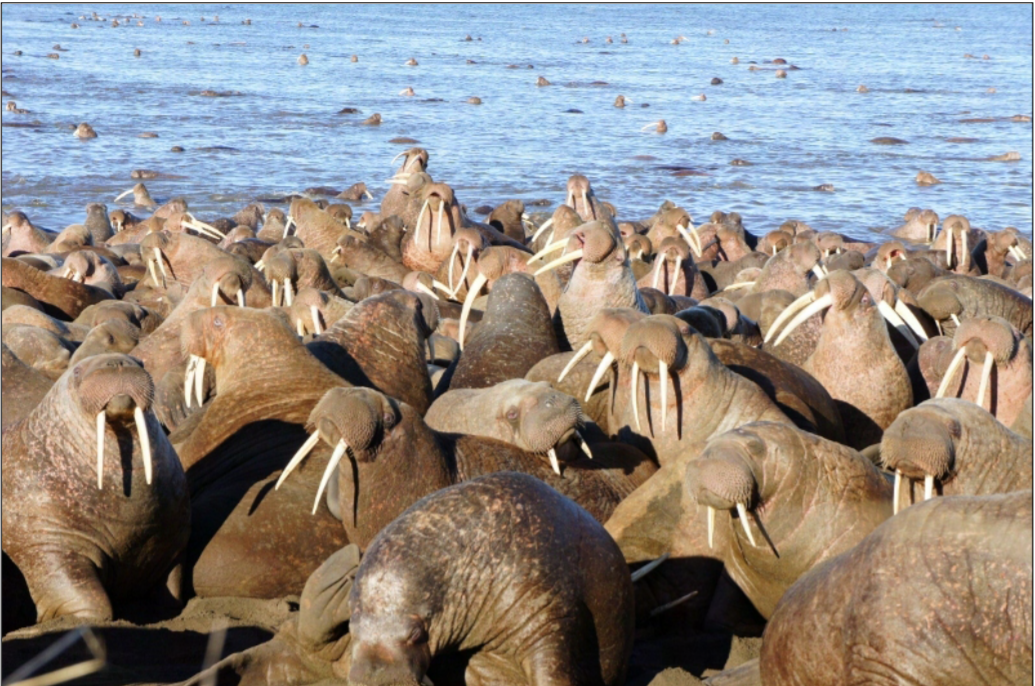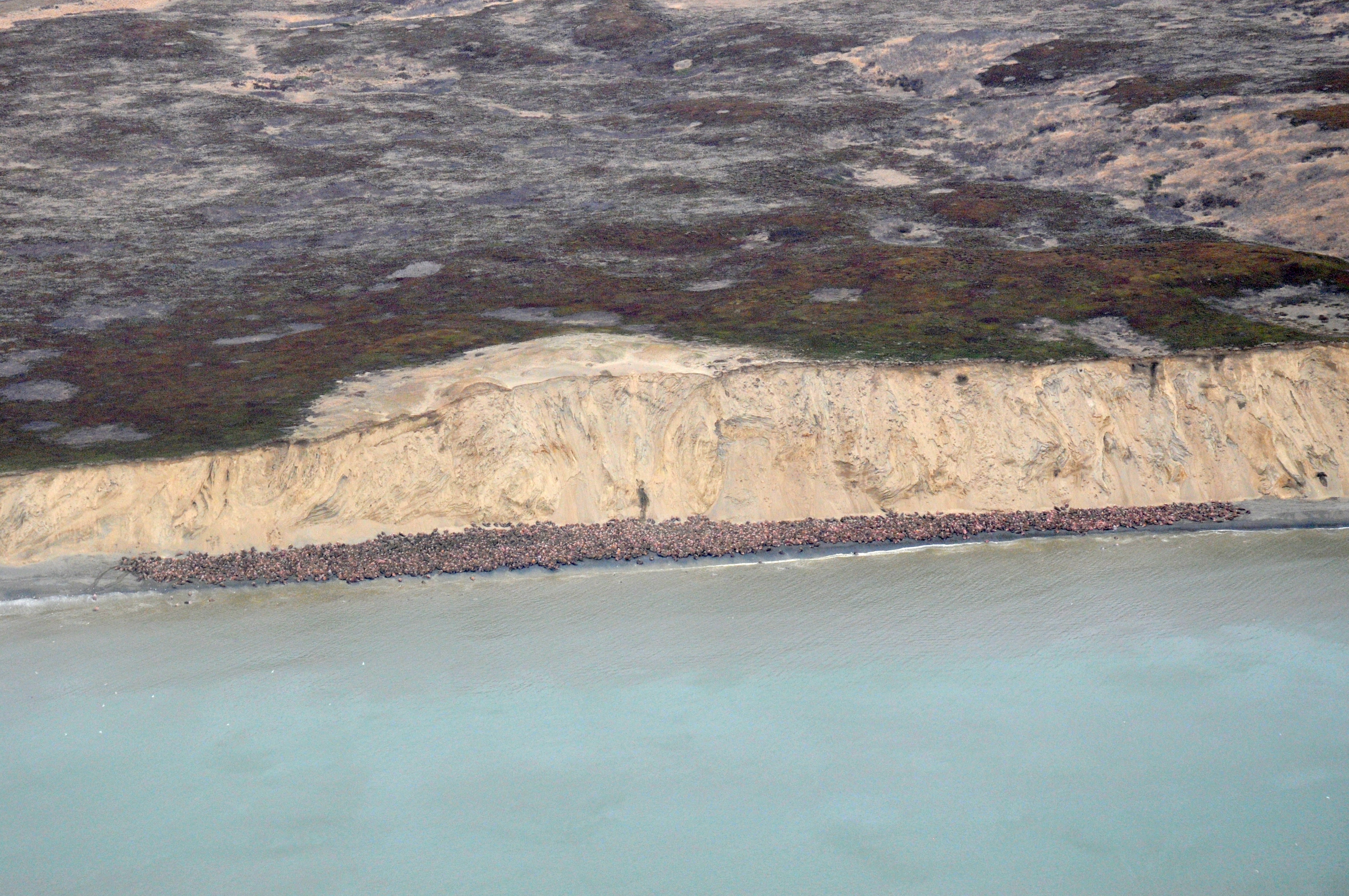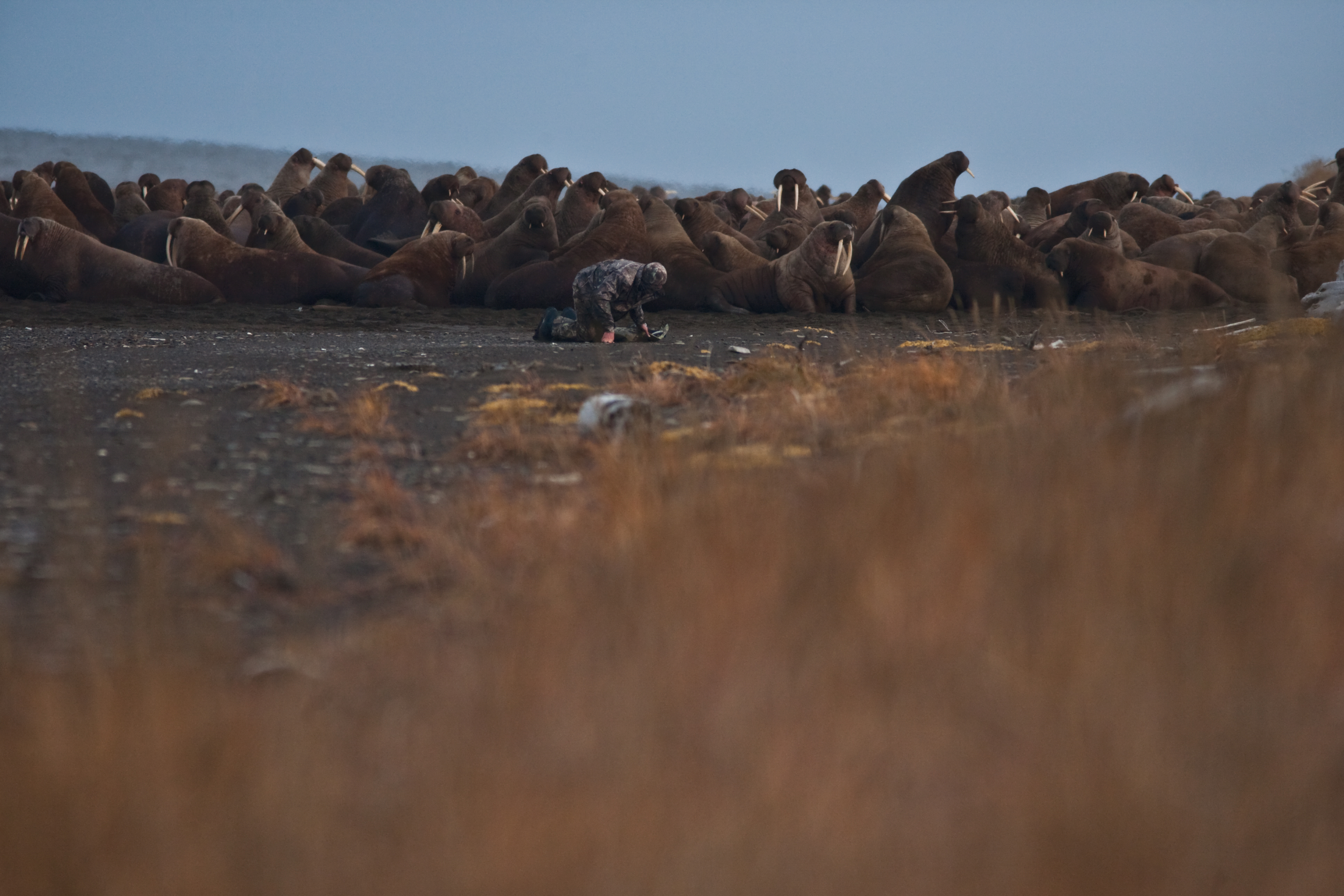Netflix's Our Planet showed walruses in distress. We need to find what humanity's role is
Understanding walrus-human interactions in the past might shed some light on the "walrus scene"
Wikimedia
If you’ve watched the polar episode of the new Netflix documentary Our Planet, you might’ve been traumatized by footage of walruses throwing themselves off cliffs in Russia. This seems shocking, but Ed Yong's recent piece in The Atlantic about the footage featured scientists who are skeptical of the narrative that this is driven by climate change, with shrinking sea ice forcing walruses onto increasingly overcrowded beaches. These bizarre events have happened before, they argue, most notably in Alaska between 1994 and 1996, though no one seems to know why.
There's no question that the Arctic is warming, and that the effects on wildlife are starting to become noticeable. Researchers and Indigenous hunters have already seen differences in walrus migratory patterns across the Arctic, with walruses changing when and where they spend time on land for breeding or resting, potentially making them more vulnerable to predators or new pathogens. But researchers say the full extent of the impacts of climate change on species like walruses is, at the moment, still unclear.

Bill Tracey Sr.
In a recent paper published in the interdisciplinary journal Quaternary Research, Xénia Keighley and colleagues argued that the first step toward figuring out what will happen to walruses in the future is understanding human-walrus interactions in the past. And while their paper focused on the Atlantic walrus, rather than on the Pacific walrus featured in Our Planet, global climate change will likely impact both species, making the development of methods for studying the historical ecology of Arctic mammals even more important.
Developing this kind of historical ecology is complicated because the information that's needed to create it is spread out across several different fields of research. Biological research on walruses has largely focused on living populations, seeking to estimate their numbers and understand their behavior in order to better conserve and manage them. Studying walruses in this way gives us only a snapshot of their evolutionary history; we can't know if living populations are truly representative of walrus abundance and diversity in the past.
Meanwhile, archaeologists and historians have focused on the distant past, largely not concerned with how humans have used and viewed the walrus in modern times, or with the effects these uses have had on walrus population biology.
Keighley and colleagues say that this disciplinary divide has left some gaps in our understanding of long-term human-walrus interactions. We still can't answer basic questions like whether the distribution, abundance, and diversity of walruses has changed over time as hunting practices and pressures have differed, or how walrus behavior has changed previously in response to human disturbances, such as abandoning haul-out sites due to the presence of people. The answers to these questions provide critical information on the future of walruses adapting to climate change.

A walrus haul out
Schoen, USGS
Ancient DNA recovered from archaeological sites and museum collections, for example, could tell us about the fate of walrus populations in places further south than they live today, when some areas of the North Atlantic were 4-6 degrees C warmer. Did they go extinct or interbreed with other walrus populations? It could also tell us if those "lost" lineages contained local genetic adaptations for things like increased heat tolerance, which would be potentially critical for the long-term survival capabilities of today's populations.
In terms of how walrus behavior has changed in response to human disturbances, Keighley and colleagues suggest comparing stable isotopes from the teeth of living, historic, and prehistoric walruses. Isotopes are variants of elements containing different numbers of neutrons. They're incorporated into an organism's tissues over its lifetime and can provide a "signature" of diet and environment, because they vary between foods and locations. A fine-grained analysis of the stable isotopes in walrus teeth could potentially show differences in the seasonal migrations of walruses, which might be driven by human actions, like hunting, or by changes in the climate (human-caused or otherwise). Knowing the scale of these behavioral changes over time might allow us to predict how much flexibility walruses will have in the face of an increasingly warming Arctic.

A biologist uses tracking radios to see how loss of sea ice affects walruses in Alaska.
USGS
"Atlantic walruses face an uncertain future given recent, and projected, climatic changes in the sub-Arctic regions in which they are found," Keighley told Massive Science. "Using a historical ecological perspective... will help us with explanations and predictions of walrus populations today and into the future."
We can't predict what changes are in store for walruses in the future and we're still not sure what's causing them to climb to the top of cliffs. What is clear from the archaeological record is that we've been interacting with them for thousands of years and that we likely shaped their current population size and distribution through our actions, though to what degree is still unknown. The questions posed by Keighley and colleagues have given us a framework on which to build an understanding of our impact on one inhabitant of the Arctic - an understanding that might allow us to prevent repeats of the now-infamous Our Planet walrus scene.
Peer Commentary
Feedback and follow-up from other members of our community
Rebecca Dzombak
Biogeochemistry
University of Michigan
I love the link from pop culture/science to ongoing research, it catches the reader’s attention and brings on an emotional connection (probably). I just had a few questions about the isotopic details.
How will they control for isotopic shifts as a result of climatic/environmental changes rather than evolutionary, or from different populations of walruses being in waters with different isotopic compositions to begin with? (Especially if there has been a latitudinal shift in where they live, amplified by climatic changes like variability and intensity of precipitation events, fresh groundwater runoff, etc.)
Are there other isotopic or geochemical tools that can be used in parallel with stable isotopes (presumably C and O) to constrain some of these other possible explanations for isotopic shifts?
Thanks for covering this!
Thanks for reading! As I’m not an isotope researcher myself, I can only point to what Keighley et al. had to say about the potential for using isotopes to solve some of the questions they pointed out in the paper (below). My read on it is that they’re mostly interested in using isotopes to get a handle on what the variation through time and across space looked like - so, less about controlling for variation and more about what the variation can tell us about change.
They say a pilot study on modern and archaeological walrus found distinct isotopic signatures from populations living in different locations, but that ultimately the spatial resolution possible will depend on being able to characterize distinct “isoscapes” in the North Atlantic. Additionally, there’s some previous work that used lead isotopes to distinguish between walrus populations living in different regions. They also suggest that using nitrogen isotopes might allow them to get a better handle on things like changes in diet and life history patterns over time.